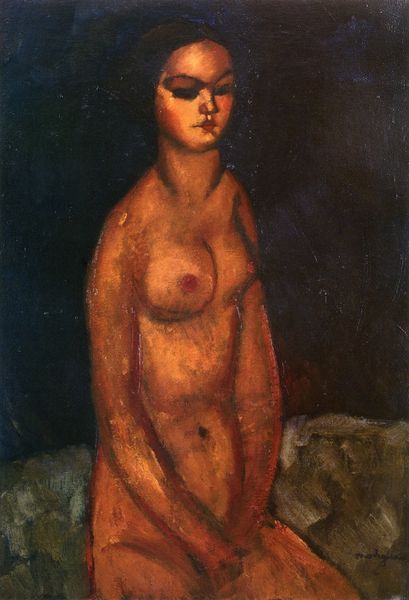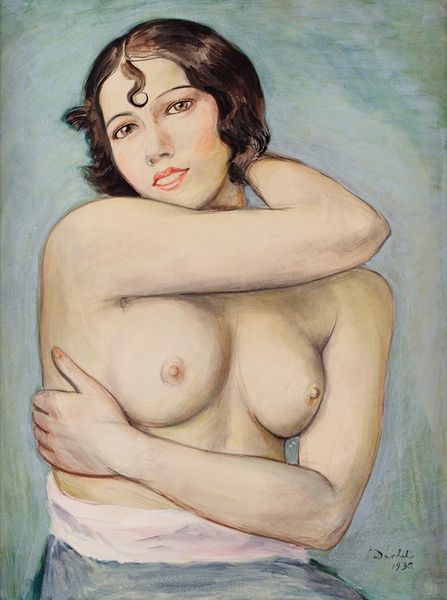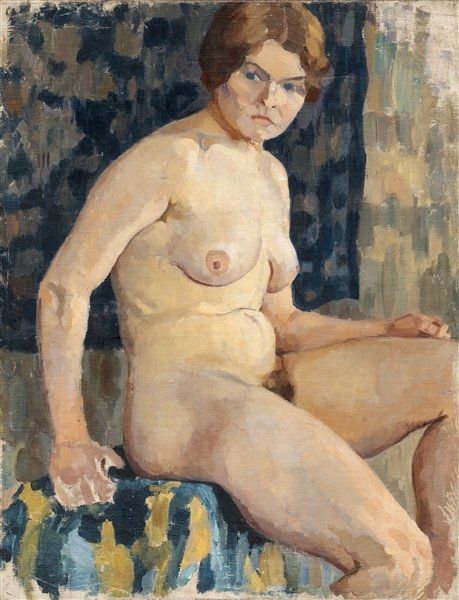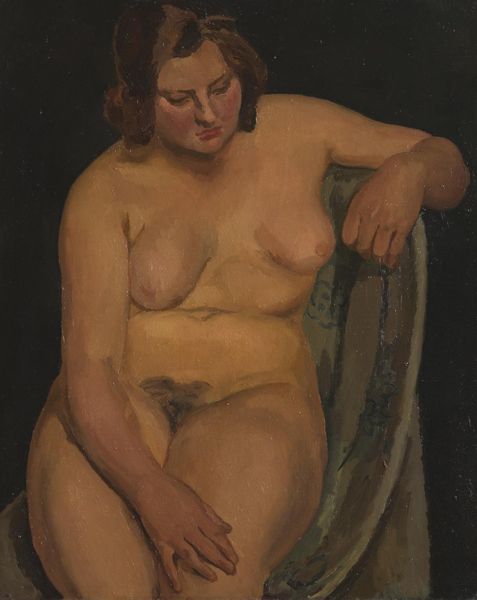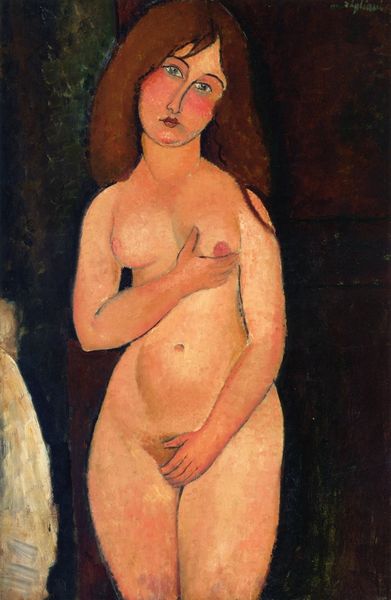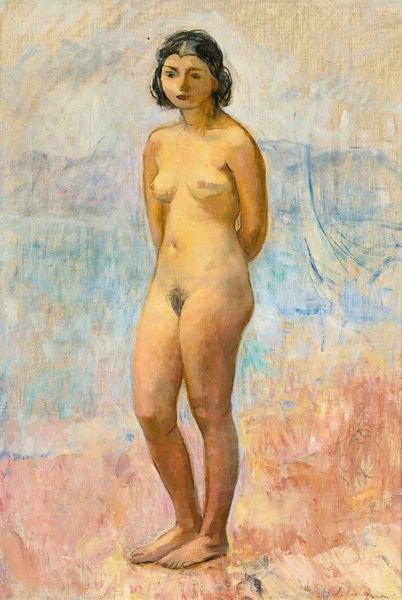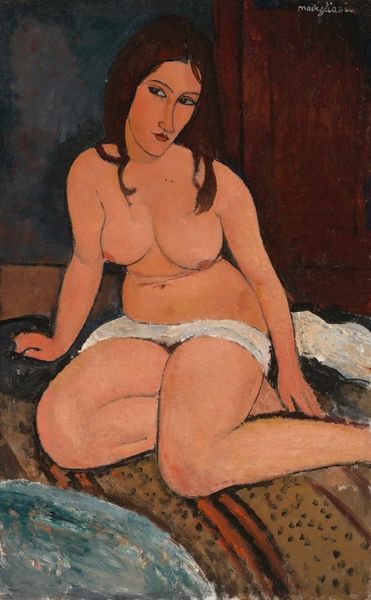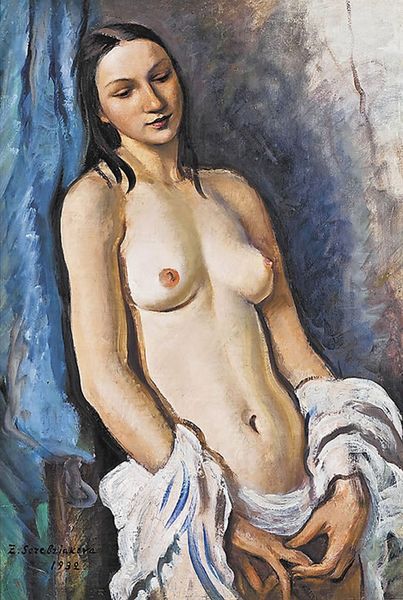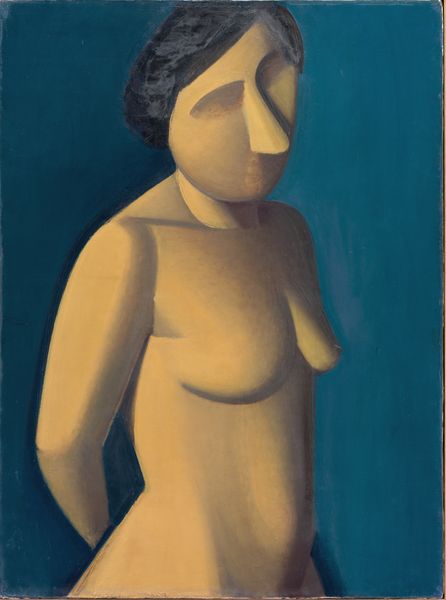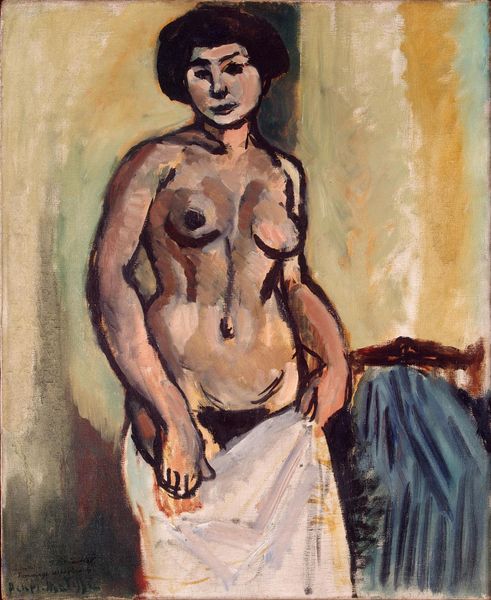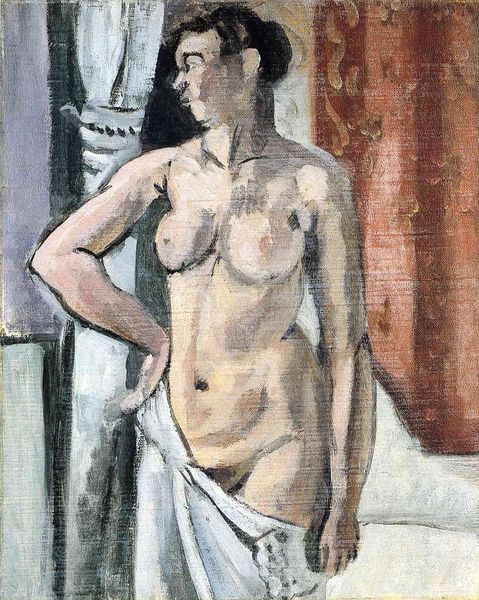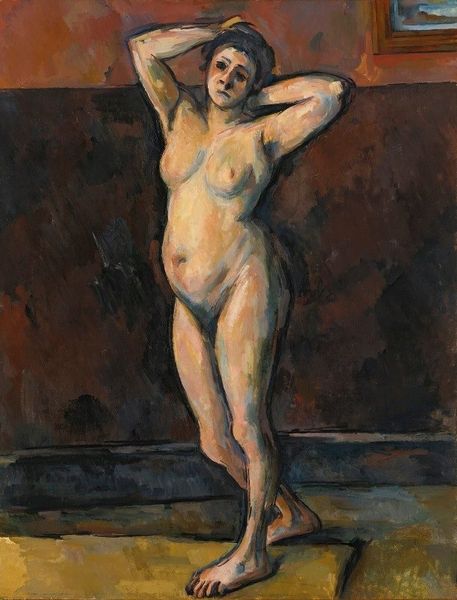
painting, oil-paint
#
portrait
#
painting
#
oil-paint
#
oil painting
#
nude
#
modernism
#
realism
Dimensions: overall: 86.2 x 58.5 cm (33 15/16 x 23 1/16 in.) framed: 111.1 x 83.2 x 6.4 cm (43 3/4 x 32 3/4 x 2 1/2 in.)
Copyright: National Gallery of Art: CC0 1.0
Curator: Let's discuss Walt Kuhn's "Dryad," created in 1935. An oil painting, it depicts a nude female figure against a simple background. What are your initial impressions? Editor: There's a starkness to it. A powerful but quiet female presence conveyed through simple lines and a muted palette. The almost confrontational pose challenges the traditional objectification often present in nude portraits. I wonder how contemporary audiences perceived it? Curator: Well, Kuhn's career fluctuated greatly. This was a time when American art was grappling with identity. We see influences of realism but with a modern sensibility, and during that time museums and galleries often shaped what "American art" meant. Kuhn wasn’t always in favour. Editor: Exactly. Thinking about the title “Dryad,” the allusion to mythology complicates things. Dryads are tree spirits, nymphs, but this woman seems decidedly un-ethereal. Does Kuhn intend a commentary on the relationship between women and nature? Or is it simply a means of elevating the subject through classical association? We could see this through a feminist lens, comparing it to male interpretations. Curator: I agree. Considering his other works—often portraying circus performers and dancers—Kuhn might have been drawn to the human form in all its reality, exploring themes of spectacle and representation in a patriarchal society. He wasn't interested in idealized beauty, rather the inherent dignity and presence. I suppose Dryad asks the question of where nature and woman intersect, and who gets to decide how. Editor: That’s key. The historical context allows us to unravel layers of meaning within that deceptively simple composition, particularly thinking about it now, during heightened dialogues around agency and body positivity. Kuhn forces the audience to confront their own expectations and gaze. Curator: He certainly provokes us to think about power dynamics and cultural conditioning embedded within the act of portraiture. The role that museums play in either enforcing or dispelling cultural expectations makes how we exhibit Kuhn’s work all the more significant. Editor: It seems the image asks: who is the muse? How much control does she have? Perhaps we still grapple with those very same questions today. Curator: Absolutely. It continues to challenge our contemporary perspectives.
Comments
No comments
Be the first to comment and join the conversation on the ultimate creative platform.
